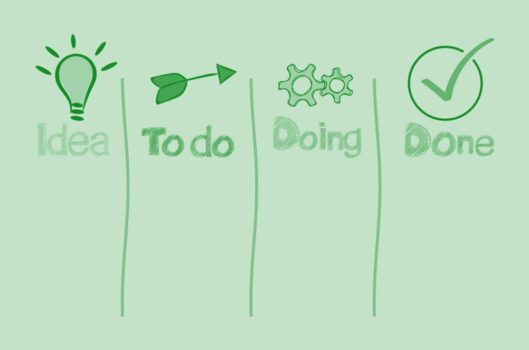Our approach
You are probably on this page because you are deciding if you should talk to CurioValue. We would like to help by providing some useful information..
What we seek to deliver, aside from mutual satisfaction.
Things we believe make working with us worthwhile and differentiating.
An overview of how we typically approach client engagements.
Explaining our values and the story behind CurioValue.
In addition, check out information on our services and thought leadership content
Our consultancy and support services and solutions.
Stories, publications, observations, links and news.
You enter contracts and buy things to achieve something. Our goal is to increase the value you derive from technology spending, business relationships and a governance culture. Results can usually be classed as commercial or operational.
Cost reduction and containment
Reduction in the cost of a product, service, subscription etc. at a contract, timeframe or unit level compared to actual or forecast levels.
Cost avoidance is either mitigation of the impact of changes (such as inflation or bundling) or acting to avoid the need to buy additional or any products or services.
Capacity to reinvest
Often the most desired outcome is not underspending, but freeing up funds; reducing the opportunity cost of existing resource allocations so it can be channelled towards another priority or initiative.
A common example is reducing the expenditure on software that is running the business in order to fund innovation in new technologies and services.
Future readiness
Oftentimes commercial agreements lag behind the nature of the relationship or what the technology or services is expected to provide. There can be limitations such as ability to use software in certain ways or a cost impact of making any minor change.
Positive agreements combine commercial certainty with the ability to adapt to inevitable change without many of the detrimental implications.
Total cost of ownership ('TCO')
A reduction in one area may be dwarfed by the impact from other factors or aspects:
- A great unit price for a committed volume that is under used is wastage, not a saving.
- Reduced pricing that creates the need for workarounds, additional consumption or managing exceptions.
- An adoption or temporary incentive that causes overruns or is followed by future price rises once you are committed.
- The cost and resource impact of enacting changes.
TCO can have purely financial and balanced scorecard elements.
Decision making ability
A proportionate data quality level enables you to be informed. Combined with experience and context allows for enhanced consideration of options.
Applying a robust process with flexible stakeholder engagement elevates the calibre, consistency and timeliness of deliberations.
In short knowledge based decisions yield powerful results.
Improved efficiency
Doing things in an easier way and correctly saves time and effort. An under-resourced function can achieve their goals and even look to take on more.
Focus can move from keeping afloat to driving extra value. You can cover a greater scope, stay ahead of change, or dedicate more attention to a neglected topic or supporting a strategic objective.
Governance and assurance
Whilst outcomes are often most prized, having the ability to get there in the right way can be just as important. Knowledge that risks and rewards are balanced. Raising the upside ceiling raised and lessening the impact of failure is a mark of quality and foundation for ongoing success.
Being assured that your compliance, supply chain risk and processes are operating within your risk appetite allows for competitive advantage. After all, the purpose of brakes is allow you to go faster.
Reduced workload
There is never enough time to get everything done. That is true without the right processes and tools. In the era of AI, there is growing potential to do more with less.
Quality structures and data allow for automation, plus reduce the need for repetition. Throughput can be increased significantly, leading to less mundane activity. Highly motivated people are ore productive and innovative, resulting in organisational success.
Tenets and differentiators
Amelioration is our goal
We engender improvement in client ecosystems and the wider world. The way we work includes some key tenets:
Applying an ongoing curiosity to your objectives, needs and circumstances.
Rapidly tailoring an adaptable plan to uncover and evaluate opportunities.
Balancing the big picture objectives with smaller details and immediate needs.
Combining experience and tenacity in pursuit of enabling actions and decisions.
We are different ... in a positive way
Here are some reasons to engage with CurioValue:
We aim to hassle free, reasonable and friendly. We want interactions to be frictionless and a simple , open approach to discussing issues.
Even our contracting is based on this approach. Yes, we need to have the right protections and benefits for both parties, but these should be aimed at a joint success.
We look to avoid the issues and traps seen in the course of optimising and governing contracts. To help this we offer a range of options:
- Rate card (time and expenses) and milestone based billing.
- Outcomes centred commercials incorporating an element of so called success fees, gain share or fees at risk.
- In certain scenarios, trial services that do not create a financial obligation can be a feasible option. We do however eschew ‘jam tomorrow’ situations.
- Reward structure that help you recoup earlier fees in recognition of future services or positive engagements.
We do not claim to be the cheapest option, but we are confident that your money is well spent. After all, we should practice what we preach.
We are so confident that we do not look to lock you in to a situation. By default we include break clauses and our methodology is staged so that the path of our relationship can be altered as your circumstances change.
If we believe a better path may be a viable option, especially where it results in a stronger balance between total cost of ownership (‘TCO’) and value realised for you.
Our intent to improve your situation is genuine and we will offer our opinion. This aligns to our values and provides a foundation for a strong working relationship. For example:
- Highlighting where we see something wrong or has a clear opportunity to improve.
- Telling you how it is and not hiding behind marketing rhetoric or guessing what you want to hear.
- We do not want to over sell. If we cannot do something, we will tell you. We would hope to be able to say who can or suggest where to look.
- We will say no when it is the right thing to do. similarly we will be open if we do not know.
Where we leverage our network to partner, subcontract or supply solutions, we will be clear if incentives exist.
Our values are centred on doing the right thing, improving the world and partnering in a collaborative manner. Being reasonable is an essential pre-requisite to living up to those commitments.
What we ask in return is for our clients to reciprocate. Everyone benefits from a positive intent, both when things go perfectly and when inevitable bumps in the road come into view.
An exception is when a request is preposterous. It might receive a polite but unconventional response.
Method
We find a staged approach works well for most engagements, and gives you control. For example, a quick orientation and discovery exercise feeding into initial analysis and discussion of observations, findings and recommendations. You then have the flexibility to decide if the next phase progresses to the original plan or is adapted.
The next actions could be any combination of realising quick wins, working on approved recommendations, deeper analyses or planning or transitioning into a future state for tooling or processes. You can even choose to apply a strategic pause.
Although much of this stage may have already taken place, critical elements can often be overlooked. At the outset of an engagement, we look to get a common understanding of key parameters such as:
- Confirmation of expectations and goals to ensure alignment
- Scope – inclusions, exclusions and known priorities
- Timetables – especially if there are hard deadlines such as reporting to steering groups, completing a divestment or agreeing a major agreement renewal
- Ways or working – how will communications be most effective, are there specific systems that should be used, what frequency and format of progress review is most appropriate?
Curiosity is in overdrive in this stage. Working from your objectives and purpose, we look to understand as much relevant information as possible within a short timeframe. The context and availability of people, materials, systems and data will dictate what this includes, but typically there will be interviews with key stakeholders, reading of readily available documentation and high level data analytics.
For example in a SAM or FinOps initiative we would look to understand both the facts and feelings around:
- The current position, recent activity and initiatives – we look for the good, bad, indifferent and areas that are unknown?
- Approximate volumes of spending products, users, devices, services, platforms, vendors, transactions etc. Where ferasible we would ask for some basic reporting, access or representative data samples
- Existing people, processes and tools – what scope do they cover and exclude; how effective are they?
- Goals and aspirations – what is absolutely essential to whom versus desired future capabilities or positions versus areas that are off limits or would be nice to have but not perceived as valuable.
The analysis stage is context dependent. On a short project around a single relationship, it is likely to be wrapped into discovery activities. For more programmatic initiatives such as reducing the total cost of technology purchases, analysis will probably be iterative: starting at a high level, using a sample set of data or being refreshed as more information reveals itself.
We will look at the systems, documents and data made available along with notes or recordings from interviews to build observations, calculations and recommendations. We prepare for joint review sessions by producing relevant summary information, either as pre-reading or for presenting live. We encourage debate on the findings of the analysis stage to arrive at a considered position to make decisions from.
Following analysis discussions, we put forward recommendations and options which can range from or combine:
- Solely acting to realise ‘easy wins’, a point specific outcome, validate a hypothesis etc.
- Performing more detailed or wider review activity.
- Undertaking detailed planning and consultation ahead of structural improvements or changes.
- Progressing to implementing tooling, processes or agreed actions.
- Deciding to take a different path, which could include curtailment of activity.
We will provide guidance and support for whichever path is taken, whether that is for you to progress yourself, we continue to a future stage or provide referrals for other specialist areas of need.
We may have already enabled you for success, to implement improvements, or may want guidance as you apply change and realise outcomes (shown above). Alternatively, you may look for an implementation that we either deliver or coordinate with or for you.
Whatever the scenario, we align our approach to your objectives and priorities, as highlighted through the key tenets (shown above) and our values (opens a new window). Where you choose CurioValue for an ongoing engagement, we act flexibly by working within your preferred governance protocols or to apply our tried and tested model.
We are huge advocates of a continual review process – partly demonstrated by the governance model shown below – but primarily as change is inevitable.
Part of the reason for our flexible working approach is that we know your needs will evolve over time. We have seen so many relationships that lock in the provider and customer, with neither getting the value they really crave. For example, a SAM or FinOps programme is likely to identify some fairly immediate benefits: optimised costs and greater visibility. These are often the platform for greater improvements for a wide range of interested parties.
CurioValue acts as a critical friend to help adapt plans and ensure you remain on coursefor maximum success. This includes regular self-reviews and an openess to challenge. Also refer to the tenets of our approach (shown above) and our values (opens a new window).
Managing engagements
Clarity, simplicity and candour are key principles for successful working relationships.
We provide a choice of governance models – we can either work to your protocols or adopt CurioValue’s structure.

Periodic steering group discussions – typically monthly.

Weekly progress cadence using kanban style reporting and discussion of issues.

Tactical communications as required – scheduled and/or ad-hoc.

Flexible reporting of outcomes and future improvement observations.